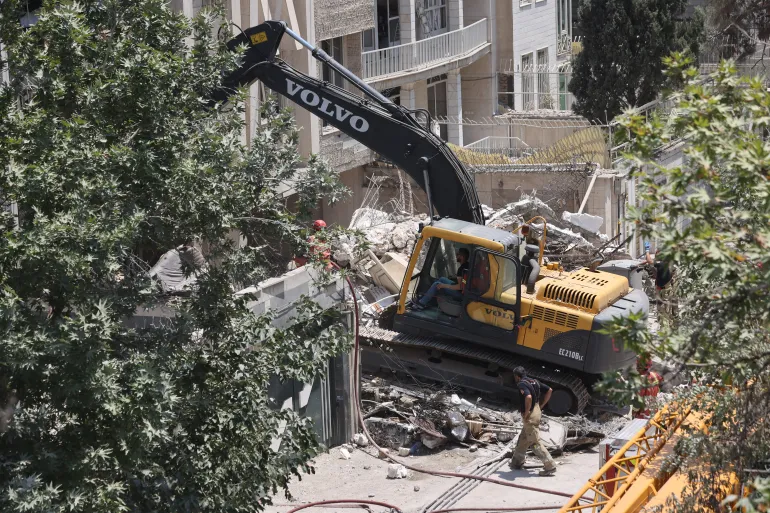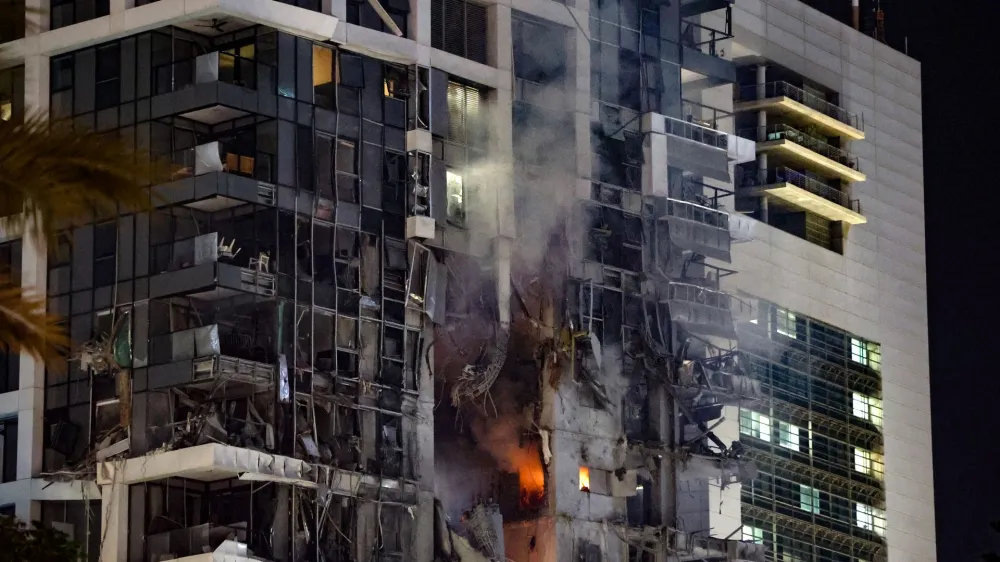Israel’s recent strikes on Iran targeted the Islamic Republic’s nuclear facilities amidst ongoing international concerns that Tehran is seeking to develop nuclear weapons—an accusation Iran consistently denies.
While experts suggest the attacks may have caused some damage, they are unlikely to have delivered a decisive blow to Iran’s nuclear program.
Extent of Damage: According to information from Iranian officials cited by the UN’s International Atomic Energy Agency (IAEA), Israel’s operation included strikes on underground uranium enrichment sites at Natanz and Fordow, as well as a uranium conversion facility at Isfahan.
The IAEA confirmed that a key above-ground component of Iran’s Natanz nuclear site was destroyed. Analysis of satellite images by the Institute for Science and International Security (ISIS) revealed “extensive” damage to Natanz’s power supply, which could significantly affect centrifuges, the machines used for uranium enrichment.
ISIS noted that a loss of backup power would render the enrichment plant “inoperable for the time being.” Iran, however, claimed only minor damage to Fordow.
The full impact on uranium stockpiles near the Isfahan site remains uncertain, with Ali Vaez of the International Crisis Group suggesting that if significant quantities were moved to “secret facilities,” Israel’s efforts could be nullified.

Feasibility of Destruction: Experts believe that while Israel can inflict damage, it is “unlikely to be able to destroy” Iran’s nuclear programme. Ali Vaez highlighted that Israel lacks the “massively powerful bombs” required to destroy hardened underground facilities at Natanz and Fordow, suggesting such an operation would require US military assistance.
Kelsey Davenport of the Arms Control Association added that even with the reported deaths of nine Iranian nuclear scientists, Israel’s unprecedented attack cannot erase the nuclear expertise Iran has already accumulated.
Risks to the Population: The IAEA has reported no increase in radiation levels at the affected sites, and Kelsey Davenport stated there is “very little risk” of a harmful radiation release from attacks on uranium enrichment facilities.
However, she warned that an attack on Iran’s sole nuclear power plant, Bushehr, could have “a serious impact on health and the environment.”
Following the strikes, IAEA chief Rafael Grossi emphasised that nuclear facilities “must never be attacked,” warning of “grave consequences for the people of Iran, the region, and beyond.”
Iran’s Nuclear Proximity: Since the United States’ unilateral withdrawal from the 2015 nuclear deal in 2018, Iran has progressively reduced its adherence to some obligations, particularly regarding uranium enrichment.
As of mid-May, Iran possessed an estimated 408.6 kilogrammes of uranium enriched to up to 60 per cent, a mere step away from the 90 per cent needed for a nuclear warhead.
The IAEA estimates Iran theoretically has enough near-weapons-grade material for approximately 10 nuclear bombs.
Iran remains the only non-nuclear-armed state enriching uranium to this level. While the IAEA has criticised Iran’s lack of cooperation, it notes “no credible indications of an ongoing, undeclared structured nuclear programme.”
However, Davenport cautioned that the strikes could inadvertently strengthen internal factions within Iran advocating for the development of an atomic arsenal, effectively pushing Iran “closer to nuclear weapons” politically, despite technical setbacks.


 Trending
Trending 